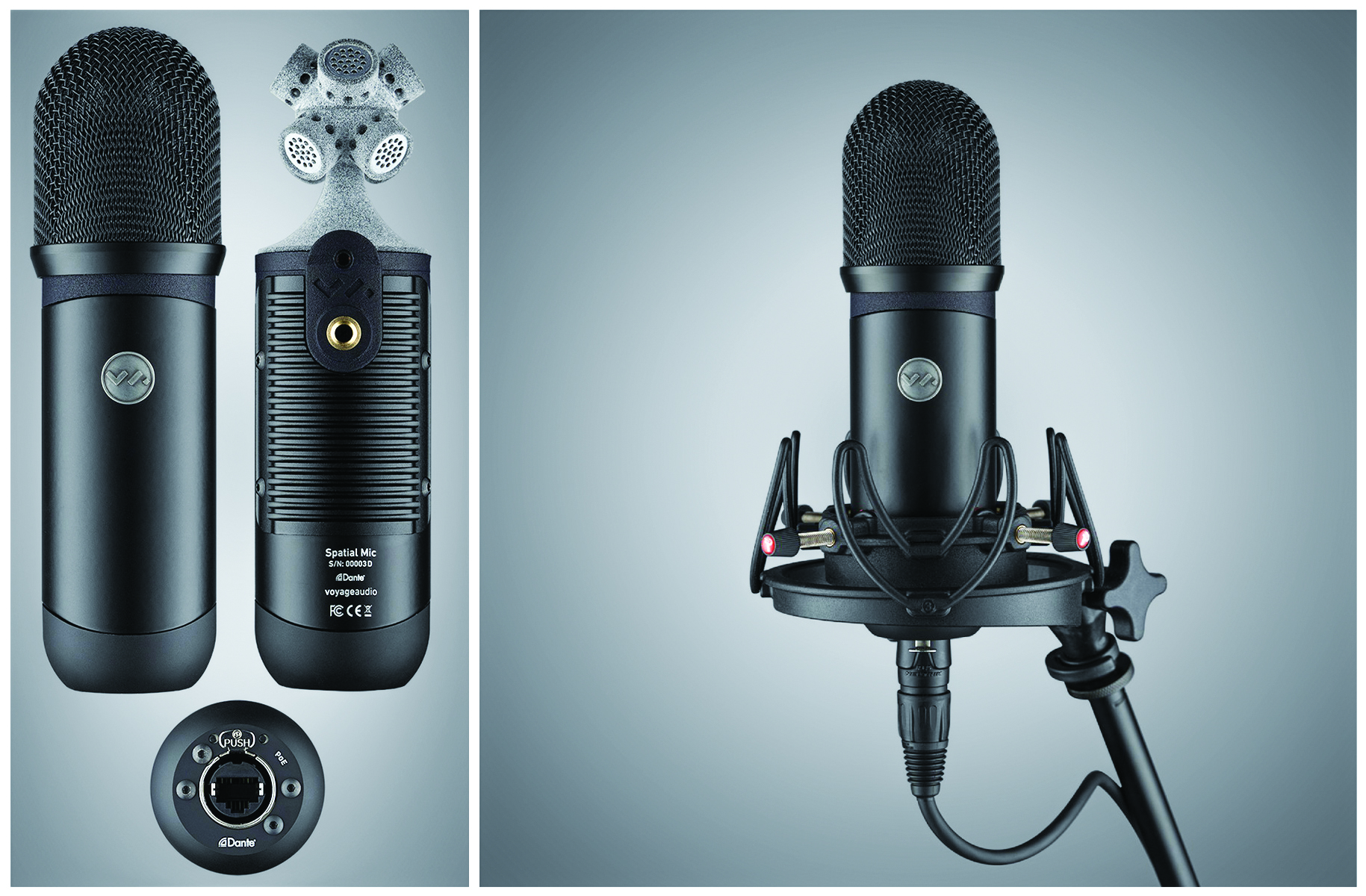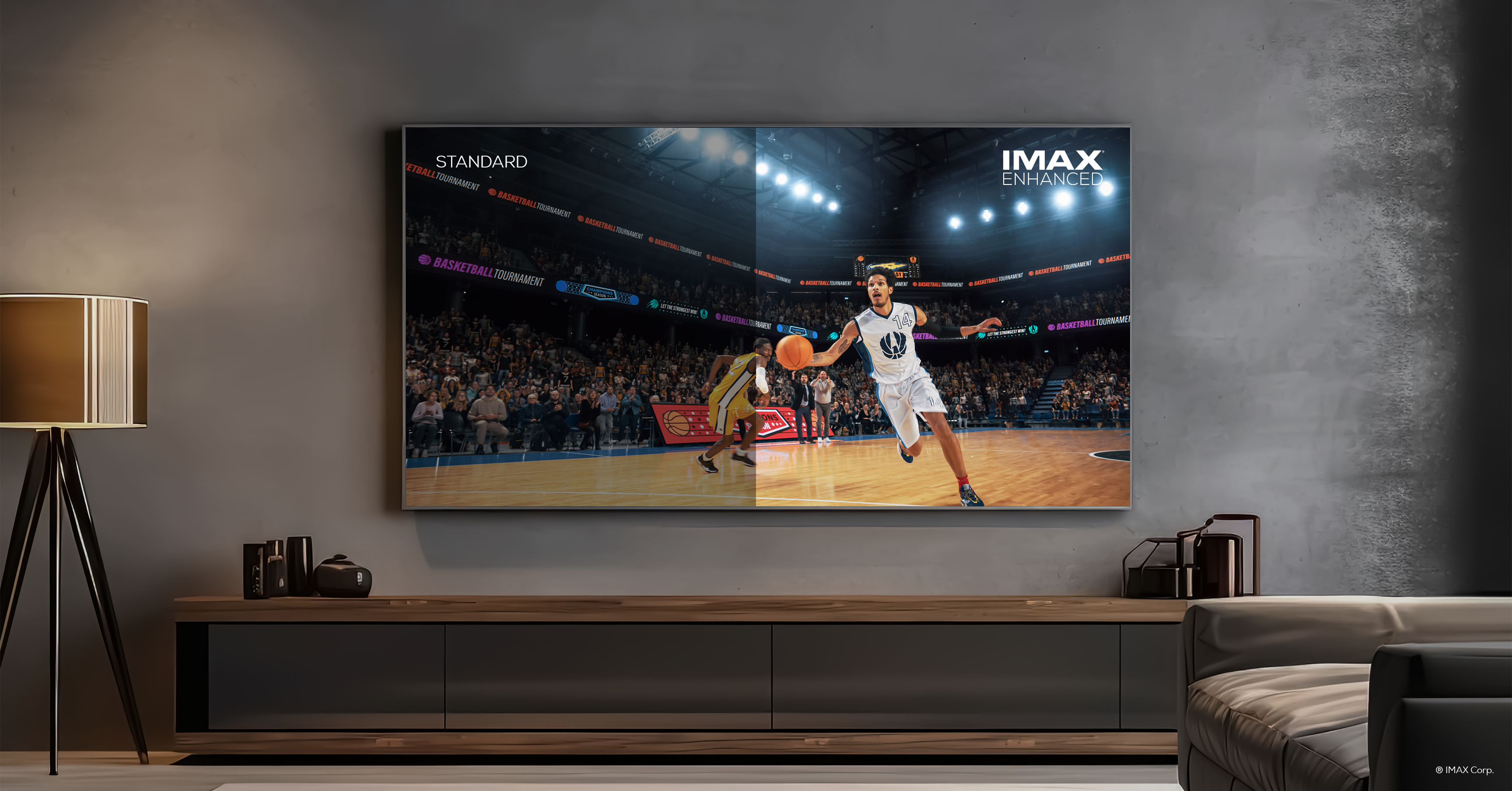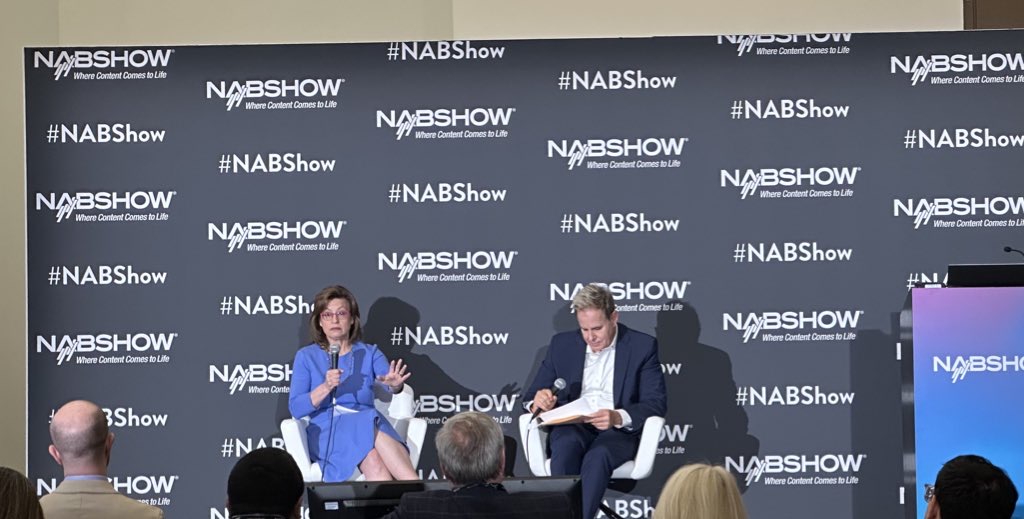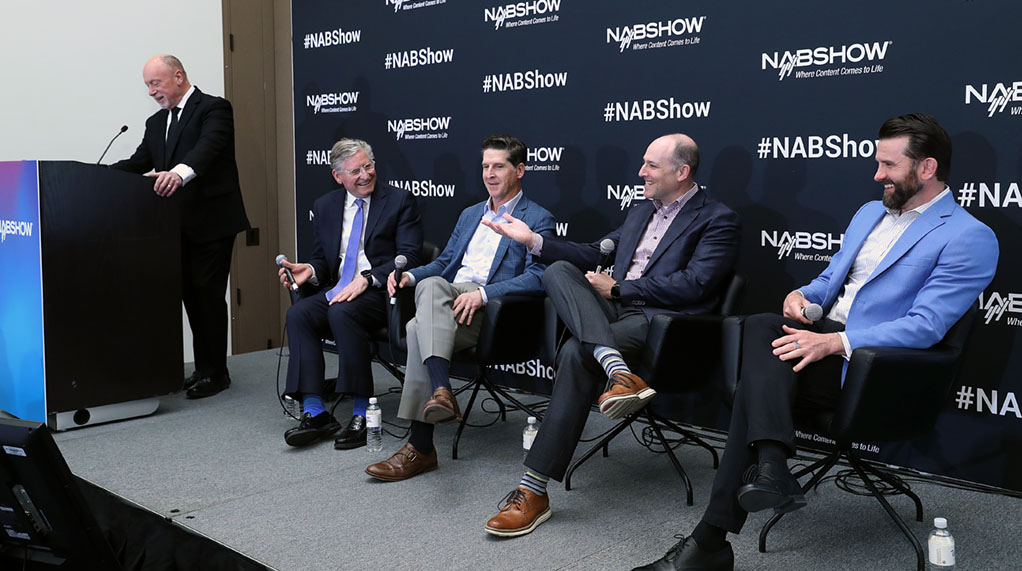Fox Sports Readies the Field for World Series
LOS ANGELES—While it may be unclear today what will be the matchup in the World Series, one thing is certain: the technology used for game coverage will be groundbreaking—literally.
As it did for the All-Star Game, Fox Sports plans to use omnidirectional microphones buried strategically around the field to complement audio pickup from the parabolic, effects mics and other mics it typically uses for game production.
“We have them in the outfield, on the edge of the infield and at each base,” says Michael Davies, Fox Sports SVP of Field & Technical Operations.
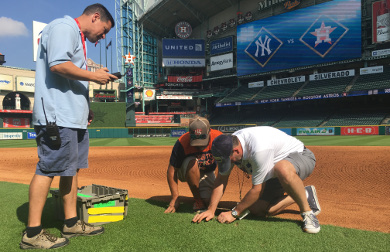
Fox Sports crew installs microphones on the field of the Houston Astros during the 2017 ALCS.
“We use the parabs [parabolic mics] for a lot of pickup, but it’s nothing compared to what we can get from these omnidirectional mics in the infield,” he says.
In all, Fox Sports will bury 14 of the more than 80 game-action mics it plans to use for the World Series in the outfield and infield—including two in front of the pitcher’s mound and one behind.
They will pick up everything from an outfielder calling for a catch to the grunts of a pitcher delivering a pitch, says Davies.
Get the TV Tech Newsletter
The professional video industry's #1 source for news, trends and product and tech information. Sign up below.
Placement of the mics will require making small slits in the field, positioning the mics and folding the grass back over them, he says.
“Remember, we used to take cameras and bury them, and that was a little more invasive,” he says.
The setup is so unobtrusive, that if Fox Sports were not to mark their location, the mics would be nearly impossible to find after the game, says Davies.
Another major tech feature of the Fox Sports coverage of the World Series will be eight Super Slow Motion and Hyper Motion cameras.
The broadcaster will use a combination of Sony HDC-4300 Super Slow Motion cameras, operating at 360 frames per second, a Sony HDC-4800 in HD mode running at up to 960fps and two Vision Research Phantom cameras running at between 2,000 and 2,500 frames per second, says Davies.
“This [the Phantom camera shots] is where you get the coverage of the pitch—where you can see the spin on the ball with crisp and clear motion,” he says. “Depending on where the camera is, you can also get those very slow shots like we did in Game 6 of the World Series last year that allow you to determine if he is safe or out.”

Fox Sports determined that eight slow motion cameras would be best based on the camera positions that could be “well served” by super motion, says Davies.
That means mid-first, mid-third, tight-center, some cameras positioned low on the field and the Phantom cameras on either side, he says.
While Super Slow Motion video is handled in the same manner as normal video in the production truck, video from the Phantom cameras requires special handling.
The Phantom cameras are triggered to playout a baseband video clip at a pre-determined frame rate that typically is higher than 360fps when needed, says Davies.
The server operator can scrub through the memory on the camera itself to hone in on the area of action without, for example, slogging through 6,000 frames of video in a three-second clip.
“You’re able to clip it right to the area of interest and play it right out,” he says.
Graphics will feature prominently in the coverage, as well. Fox Sports is working with Major League Baseball Advanced Media (MLBAM) and SMT (formerly SportsMEDIA Technology Corp.) for live action and replay in-perspective strike zone graphics.
For replays, Fox Sports will use MLBAM’s Pitchcast system, which will show pitch speed, location and ball trails.
The live strike zone comes from SMT, which incorporates data from the MLBAM Statcast radar. Pitch speed and location will be shown in real time.
“This is the first time Fox has done a live strike zone, where the strike zone stays there for the whole game,” says Davies. “While some other broadcasters have done this, I think we are bringing a little more subtlety to it.”
“It’s subtle enough that it is there, but if you don’t want to pay attention to it, it won’t get in the way.”
Fox Sports has released its World Series production setup “by the numbers,” which includes:
Staff & Support
More than 140 technicians
36 support staff
More than 126 man-hours over nine days
Field Support
More than 384 strands of fiber
More than 3 miles of fiber optic cable
Three edit bays
64TB of shared storage
2Gbps of data connectivity
12 transmission paths
Cameras and Lenses
30 HD game cameras
Four Super Slow Motion 6X (360fps)
One Super Slow Motion 16x (960fps)
Two Hyper Motion (2,000fps)
Two RF cameras
One RF stabilized camera
One aerial camera
Replay
64 record channels
32 playback channels
More than 2,000 hours of recording capacity
Audio
Submix
All digital audio network throughout stadium
12 RF player, announcer and umpire mics
8 RF FX mics
9 RF base mics
78 field microphones
14 RF infield microphones
Phil Kurz is a contributing editor to TV Tech. He has written about TV and video technology for more than 30 years and served as editor of three leading industry magazines. He earned a Bachelor of Journalism and a Master’s Degree in Journalism from the University of Missouri-Columbia School of Journalism.


